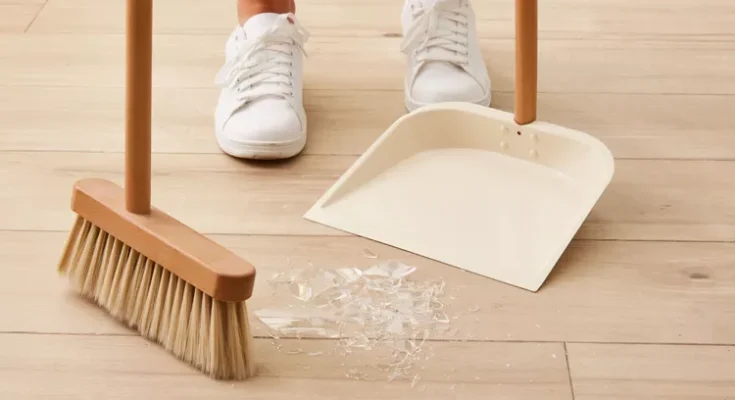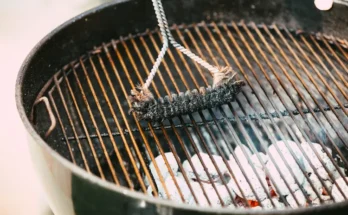Know a lobby broom from a Tampico broom with our handy guide.
A broom is an essential cleaning tool that dates back centuries—in fact, the broom may be the oldest cleaning tool in existence. Brooms are used primarily for floor care, but they have plenty of other uses, from dislodging cobwebs and swatting insects to being symbolic objects used in religious and ceremonial services. With all that history, it’s no wonder that the humble broom has evolved into a tool with as many variations as it has uses.
But do you know which type of broom is best suited for different cleaning jobs and floor types? More importantly, which is best for your household cleaning needs? Read on to learn about the different types of brooms and bristle materials available and which cleaning jobs each is best suited to.
:strip_icc():format(webp)/TypesofBrooms_infographic-75ec71d0d9234c02ad4aa9780b5f490b.jpg)
Broom Styles
Brooms are fabricated in different styles, with variations on the handle, the way bristles are installed, and the bristle materials.
Upright Broom
What it is: Any type of long-handled broom is considered an upright broom. Upright brooms may have natural or synthetic bristles that are either stitched into a bundle or mounted to a block broom head.
What to use it for: Indoor or outdoor cleaning, depending on the bristle type.
How to use it: To sweep using an upright broom, place your dominant hand at the midpoint on the shaft of the broom and your non-dominant hand on the top of the broom. Gently but firmly sweep dirt, dust, and debris into a pile or directly into a dustpan.
Angle Broom
What it is: A lightweight upright broom with an angled head that allows bristles to get into corners and around obstacles like furniture. Angle brooms typically have bristles that are stitched together.
What to use it for: Indoor cleaning.
How to use it: Use short strokes to move dirt and debris into a pile that can be swept into a dustpan. A back-and-forth motion can help remove stubborn dirt or stuck-on debris by allowing the angled bristles to dislodge the mess.
Push Broom
What it is: A heavy-duty broom featuring a wide head. Push broom bristles are typically mounted to the block broom head and are not used with a dustpan due to their large size.
What to use it for: Large jobs and outdoor cleaning.
How to use it: Instructions for using a push broom are baked right into the name—you sweep by pushing the broom forward in a straight line. Continue working in straight, slightly overlapping lines until the entire space or mess has been swept. Because they don’t call for sweeping in a back-and-forth motion, push brooms require less effort on the user’s part.
Hand or Whisk Broom
What it is: A short- or no-handled broom that is highly portable and easy to store. Hand or whisk broom bristles are usually stitched into place.
What to use it for: Small spaces and small jobs.
How to use it: Hold a whisk broom with your dominant hand, horizontal to the floor, and a dustpan, at a slightly raised angle, with the lip flush on the floor, with your non-dominant hand. Use short, quick motions to sweep debris into the dustpan.
Squeegee Broom
What it is: A broom fitted with a rubber blade or bristles mounted to the broom head.
What to use it for: Cleaning up liquid spills, hair, and fur, as well as dirt, dust, and other debris. Squeegee brooms can be used on hard surfaces and carpets, but often are not meant for outdoor use (check the usage guidelines provided by the manufacturer).
How to use it: Like push brooms, squeegee brooms are designed to be pushed forward in a straight line, rather than in a back-and-forth sweeping motion.
Lobby Broom
What it is: An upright broom-and-dustpan set with mounted bristles.
What to use it for: Lobby brooms are most often seen in commercial settings like movie theaters, restaurants, and stores, and can be used on hard floors and carpets.
How to use it: Use short strokes to sweep debris into the dustpan. The broom and dustpan have a locking mechanism that holds the two pieces together when not in use for easy storage.
Broom Bristle Types
In addition to knowing what type of broom to choose for different tasks, it can be helpful to understand the materials bristles are made of and the jobs they’re best suited for.
Corn Fiber or Broomcorn Bristles
When most of us picture a broom, a corn fiber or broomcorn style springs to mind. These rigid, durable bristles are made of sorghum and can be used on rough and semi-smooth surfaces, making them suited to both indoor and outdoor jobs.
Synthetic Bristles
Durable and soft, synthetic bristles made of polyester, acrylic, polyethylene, or polypropylene that maintain their structure when wet and that are resistant to cleaning chemicals are often used for commercial and street cleaning.
Rubber Bristles
Rubber bristles are especially effective at picking up hair and fur, and are excellent choices for households with pets. They are also ideal for cleaning up after at-home haircuts. Rubber brooms can be used on smooth and carpeted surfaces, but can sustain damage if used on rough surfaces. Care should be taken when using a rubber broom on semi-smooth flooring.
Horsehair Bristles
Brooms with fine horsehair bristles are designed for use on smooth and polished surfaces.
Tampico Bristles
Tampico fibers are derived from agave plants. These soft, fine bristles are best for sweeping smooth surfaces.
Steel Wire Bristles
Stiff steel wire bristles are used in brooms intended for use on rough outdoor surfaces.



